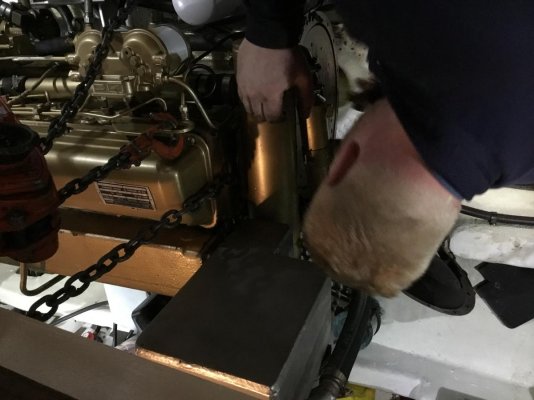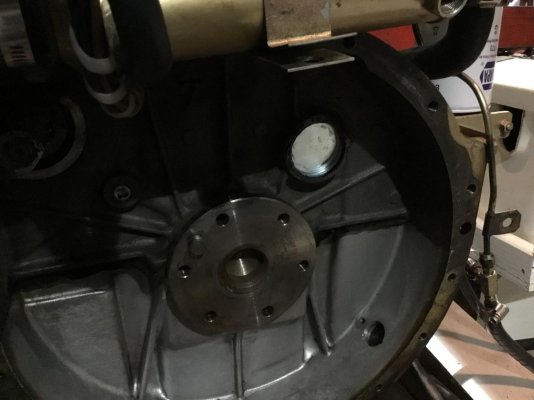Gbinterim
Senior Member
For the last several years we have had a nuisance oil leak. At first we would loose about 1/2 quart per 100 hours, however over the last two years it has increased to one gallon per 100 hours. It became a pain in the backside to keep clean. I feared it was the rear seal leaking. The engine in question is a Ford Lehman 120 with 7k hours and made in 1980, so this Fall the admiral and I decided to fix the problem. I called Brian at American Diesel and discussed the procedure and possible problem. He indicated that it was highly unlikely that the rear seal was the issue despite the age of the engine. I found a mechanic who willing allowed me to help him with the project. He felt it would not be a difficult job. Day one the transmission, shaft, damper plate and flywheel were removed time 2.2 hours. Pictures to follow. Two 4 X 4’s with come alongs were used, one lifted the transmission out of the way and the other hooked to the lifting eye of the engine supported the back of the engine. It was obvious the leak was from the soft plug in that the red RTV failed. We also employed a mirror to view the underside of the rear seal , bone dry. Parts ordered along with a new damper plate. After parts received another 3 hours to reinstall everything back to original. Total cost $1200 for labor and parts plus express shipping to Alaska.
Attachments
-
 600540F0-AF64-4CD4-BD27-912CCCC11C26.jpg120.4 KB · Views: 131
600540F0-AF64-4CD4-BD27-912CCCC11C26.jpg120.4 KB · Views: 131 -
 DB8822CC-72F3-42FF-8938-070FB1EEB858.jpg102.9 KB · Views: 143
DB8822CC-72F3-42FF-8938-070FB1EEB858.jpg102.9 KB · Views: 143 -
 ECAE3905-A952-4386-A35C-77B2C09D20F8.jpg172.4 KB · Views: 154
ECAE3905-A952-4386-A35C-77B2C09D20F8.jpg172.4 KB · Views: 154 -
 7BF98635-9E98-4325-A41B-FFC8AA3CB121.jpg130.8 KB · Views: 149
7BF98635-9E98-4325-A41B-FFC8AA3CB121.jpg130.8 KB · Views: 149 -
 13BF6F9F-D3C5-4725-A695-D6D04E4651FF.jpg89.2 KB · Views: 161
13BF6F9F-D3C5-4725-A695-D6D04E4651FF.jpg89.2 KB · Views: 161
Last edited:
